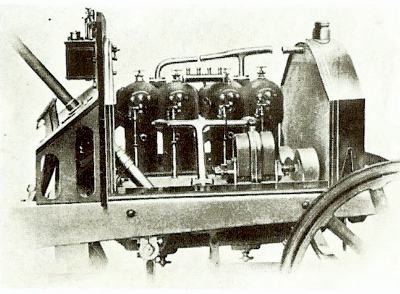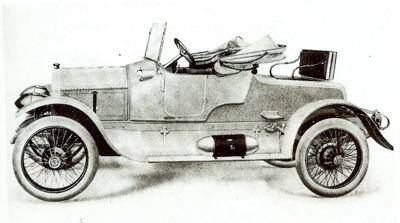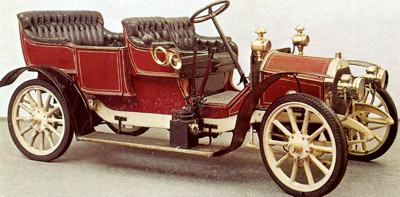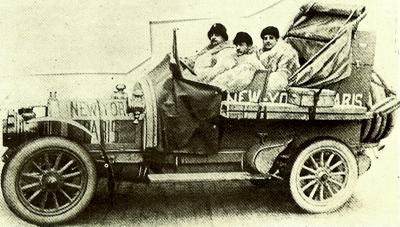|
Zust
|
1905
- 1917 |
Country: |
 |
|
Roberto Zust
Roberto Zust, a Swiss engineer, is recorded as having joined the little Italian firm of Giiller & Groff as a partner in 1871. Based at Intra, on the shores of Lake Maggiore, the company specialised in the manufacture of steam engines for stationary and marine installations. Zust, it seems, was a pioneer of the steam turbine, and may have built some form of land-going steam vehicle in the 1890s, but the company, which moved to Milan in 1900, did not become interested in internal combustion until after the turn of the century.
Taxi-Cabs and Private Cars
Some experimental cars were built in the 1902-1903 period, but the company's first commercial venture was the manufacture of a batch of three-cylinder taxi-cabs with 1723cc engines. Private cars followed in 1905, with the introduction of two big four-cylinder models on Mercedes lines. These were the 28/40 hp, with a 7433cc engine, and the monstrous 50/70 hp, with an 11,310cc power unit and an English price tag of £1000.
The 1906 Coppa d'Oro Trial
Features of their design were pair-cast cylinders, low-tension magneto ignition, honeycomb radiators and chain drive; transmission was by a four-speed gearbox and side chains. A Zust came second in the 1906 Coppa d'Oro trial, a gruelling event covering some 2485 miles; but this was nothing compared to the performance put up by Antonio Scarfoglio in the New York-Paris event of 1908. Writing in October of that year, Max Pemberton commented: 'I have never driven a Zust car, have never even seen one; but I am told that they are worthy of Italian workmanship at its best, and that is saying very much.
To me personally the interesting fact is that Lord Mountmorres, an old friend whose enthusiasms are always interesting, is about to represent the Zust firm in England. I imagine that he will meet with much success, for whatever be our patnotic impulses I am afraid that the most chauvinistic is unable to deny the wonderful merits of these Italian productions.'
The New York to Paris Race
The Zust car took a very creditable part in the "New York to Paris" race. This fiasco permitted many charlatans to advertise themselves; but it managed to interest more than one firm of repute and, among other achievements, to demonstrate the durability of the Zust and the pluck of its driver.
History is not clear on exactly what happened, however it is noted by many historians that it seems most of the cars in the race went by train and by boat. But the Zust took the road wherever possible, and where there was no road it ploughed its way across the Siberian desert as the mighty Itala had done before it. The end has been notoriety of the right kind, and exceedingly well deserved.
 Zust 18/24hp engine mounted in chassis.
Zust 18/24hp engine mounted in chassis.
 1901 Winton with chain drive.
1901 Winton with chain drive.
 1908 Zust10hp.
1908 Zust10hp.
 The New York to Paris Zust, with the team of Sirtori, Haaga and Scarfoglio.
The New York to Paris Zust, with the team of Sirtori, Haaga and Scarfoglio. |
Giulio Sirtori, Henri Haaga and Antonio Scarfoglio
The Zust had been crewed by Giulio Sirtori (driver), Henri Haaga (mechanic) and Antonio Scarfoglio (journalist and team leader); among the less likely hazards they encountered en route was an attack by wolves in the mid-western US. Their car finished some weeks behind the winning Thomas and Protos, but nonetheless it was put on show in London after the event, only to be badly damaged by fire at Bromley after being immobilised by a breakdown on its way to the Channel ferry at Folkestone. An inquisitive porter at the railway station held his lamp too close to the tarpaulin covering the car, and the car was destroyed.
Brixia-Zust
The 1908 season saw a new addition to the Zust range in the shape of a four-cylinder 18/24hp model with a 4084cc engine. Unlike the larger models, this had shaft drive; it was priced at £550 in England. It represented the start of a trend towards lower-priced models, which was accentuated by the opening of a new branch factory at Brescia, where a cheap range was produced under the Brixia-Zust name. The first car to emerge from the new works was a reworking of the old three-cylinder theme, which sold at £295 in 1909, complete with high-tension magneto and shaft drive; there was also an obscure four-cylinder variant of 2297cc.
The Tipo America
The Brixia-Zust name lasted until 1911, but was then abandoned as a result of integration between the two factories. Also new in 1909 was the 20/35 hp four-cylinder model of 4986cc. By 1912 the range had taken on a more modern look, with the cars modelled closely on the contemporary Fiat. There was now a 2.8-liter 15/25 hp, and a 6.2-liter 35/50, both with monobloc side-valve engines, while the biggest car produced was the old 7.4-liter model, though now it was called, somewhat more honestly, the 50/60 hp. With increased ground clearance, the 50/60 was known as 'Tipo America'. It still retained its chain drive, which was now distinctly anachronistic.
The 4.7-liter Aipo 300
In 1913 came another modern monobloc, the 4.7-liter Aipo 300, whose pear-shaped radiator was a close crib of the latest Fiat cooler. It was a brisk performer, and one example has survived in Britain where it was- once owned by a well known sporting motorist called Sgonina. At the outbreak of war, the Zust factory was fully occupied; as well as private cars, commercial vehicles and aero engines were built. But the name was not destined to reappear on the roads of Italy after the Armistice, as in 1918 the company was acquired by the Officine Mecchaniche of Milan, and the S305 OM of 1918-21 was no more than an updated 1914 Zust model.
